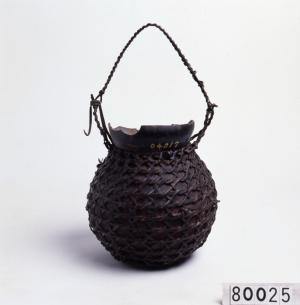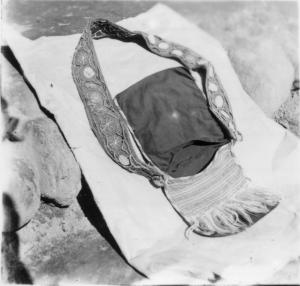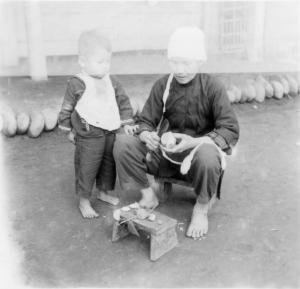Volume I (Abstract)
From various mythological materials presented in the last section, we see that the concept of the Atayal about supernatural powers centers on ancestral spirits or rutux. Actually, the word rutux refers to all kinds of supernatural beings, including souls, spirits, ghosts and gods, malevolent and beneficient. But the most important of all is the ancestral spirit. The ancestral spirit who inhabits the original home of the tribe is usually conceived in collective form. It is believed by the tribesmen that their ancestral spirits possess the highest power over the universe and human society; all the fortunate and unfortunate happenings concerning their cropping, hunting, wealth and health are determined by the ancestral spirits based on the rightness of their conduct. Therefore the basic attitude of the Atayal people toward rutux is that any supernatural misfortune or punishment they receive depends entirely upon their obedience to the rules and demands of the ancestral spirits. All these rules and demands of the rutux are called gaga. The man who follows exactly the rules and meets the demands of the ancestral spirits of the rutux will secure blessing and protection from the rutux, otherwise calamities will befall him.
But the rutux are only the spirits of their beloved forefathers, whose love and affection still remain for their living offspring. Therefore, for any violating of rules and regulations or wrong conduct, the offspring can express repentance and give sacrifice to invoke the mercy of their ancestral spirits, then the misfortunes and calamities will be removed.
We have pointed out in the introduction that among this society the family is the only kin group and the village the basic local unit. Although these two social groupings have their minor religious functions, the most important social unit which functions as a ritual group is the gaga. The word gaga, as said above, refers to those rules, regulations of secret and secular conduct demanded by the ancestral spirits, but when used here for a social grouping, it is referred to as a group of people who observe and participate collectively in those secret and secular conduct. The members of a gaga may be consanguineous or affinal relatives or just the co-members of a village, and, in principle, a member may participate in or withdraw from the gaga freely. Every gaga is directed by a chief called maraho gaga who is elected because of his personality and knowledge of productive activities and the calendar. A maraho gaga leads all ritual activities and initiates the cultivation of millet by a symbolic planting, in fact, he is more of a religious leader than of a political leader. Among the Nan-ao Atayal, every village may have several gaga. In secret sphere, the members of every gaga perform their own ceremonies of planting, harvesting and are also collectively responsible to the breach of taboos. In secular affairs, a gaga is also a unit for group hunting and for exchange of labor in doing the slashing and burning work in the field. In short, the ritual group gaga is deviced to perform and observe the gaga or rules and regulations of secret and secular conduct; in doing so, it does not only take the place of an unilateral kin group in regulating the behavior of the people, but also fulfills their psychological needs.
In order to describe how the Atayal supernatural belief is practiced or manifested in ritual behaviors, we have divided the ritual behaviors of the Nan-ao Atayal, according to their nature, into two main categories, namely, the primary rituals and the secondary rituals. The primary rituals which directly express the basic concept and attitude concerned with this belief can be further divided into two sub-categories, i.e. positively following of the traditional procedures in performing the various ceremonies and negatively observance of all the ritual taboos and rules of conducts. But when such ceremonies are not rightly performed or the rules and taboos are not exactly observed, the people will feel anxiety about the punishment coming from the rutux or the arrival of other misfortunes; they will then do some purifying rituals and give offerings in order to propitiate or conciliate their angry ancestors. Included in these secondary rituals are various kinds of propitiating ceremonies and the rituals of curing illness. For further explanation of these ritual behavior, a chart is given as follows:






